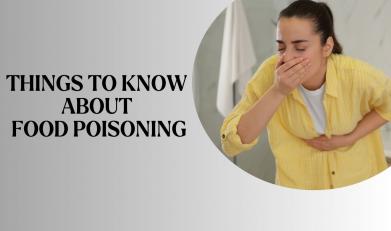

22 Jul, 2024
Food poisoning, also known as foodborne illness, is a common but often preventable ailment that affects millions of people worldwide each year. Understanding its causes, symptoms, and prevention methods can help you stay safe and enjoy your meals without worry.
Food poisoning occurs when you consume food or beverages contaminated with harmful bacteria, viruses, parasites, or toxins. Some of the most common culprits include:
Bacteria: Salmonella, E. coli, and Listeria are among the most common bacterial causes. These bacteria can thrive in improperly handled or cooked foods.
Viruses: Norovirus and Hepatitis A are examples of viruses that can contaminate food.
Parasites: Parasites like Giardia and Toxoplasma can be transmitted through contaminated water or undercooked meat.
Toxins: Certain foods, like shellfish and mushrooms, can naturally contain toxins, while others can become toxic through improper storage.
Symptoms of food poisoning can vary depending on the cause but typically include:
Nausea
Vomiting
Diarrhea
Abdominal pain and cramps
Fever
These symptoms can appear within hours of consuming contaminated food or may take days to develop. In most cases, symptoms resolve on their own within a few days, but severe cases may require medical attention.
High-Risk Foods
Certain foods are more likely to cause food poisoning than others. Be particularly cautious with:
Raw or undercooked meat and poultry
Raw or undercooked eggs
Unpasteurized dairy products
Raw shellfish
Fresh produce that has not been properly washed
Prepared foods that have been left out for too long
Preventing food poisoning involves proper food handling, cooking, and storage practices. Here are some key tips to keep in mind:
Wash Your Hands: Always wash your hands with soap and water before handling food, after using the restroom, and after handling raw meat.
Clean Surfaces: Keep kitchen surfaces, utensils, and cutting boards clean. Use separate cutting boards for raw meat and vegetables to avoid cross-contamination.
Cook Thoroughly: Cook meat, poultry, and seafood to the appropriate temperatures to kill harmful bacteria. Use a food thermometer to check.
Store Food Properly: Refrigerate perishable foods promptly. Do not leave cooked food at room temperature for more than two hours (or one hour if the temperature is above 90°F).
Be Cautious with Leftovers: Reheat leftovers to at least 165°F before eating, and discard any food that looks or smells suspicious.
Food poisoning is an unpleasant but often avoidable condition. By following safe food handling, cooking, and storage practices, you can significantly reduce your risk and enjoy your meals with confidence. Stay informed, stay vigilant, and stay healthy!